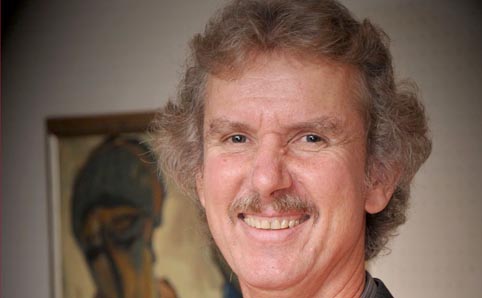Is milk really so well-known, asks UFS’s Prof. Osthoff
 |
|
Prof. Garry Osthoff
Photo: Stephen Collett
|
Prof. Garry Osthoff opened a whole new world of milk to the audience in his inaugural lecture, Milk: the well-known (?) food, in our Department of Microbial, Biochemical and Food Biotechnology of the Faculty of Natural and Agricultural Sciences.
Prof. Osthoff has done his research in protein chemistry, immuno-chemistry and enzymology at the Council for Scientific and Industrial Research (CSIR) in Pretoria and post-doctoral research at the Bowman-Grey School of Medicine, North Carolina, USA. That was instrumental in establishing food chemistry at the university.
He is involved in chemical aspects of food, with a focus on dairy science and technology. He is also involved in the research of cheese processing as well as milk evolution and concentrated on milk evolution in his lecture. Knowledge of milk from dairy animals alone does not provide all the explanations of milk as food.
Some aspects he highlighted in his lecture were that milk is the first food to be utilised by young mammals and that it is custom-designed for each species. “However, mankind is an opportunist and has found ways of easy access to food by the practice of agriculture, where plants as well as animals were employed or rather exploited,” he said.
The cow is the best-known milk producer, but environmental conditions forced man to select other animals. In spite of breeding selection, cattle seem not to have adapted to the most extreme conditions such as high altitudes with sub-freezing temperatures, deserts and marshes.
Prof. Osthoff said the consumption of the milk as an adult is not natural; neither is the consumption of milk across species. This practice of mankind may often have consequences, when signs of malnutrition or diseases are noticed. Two common problems are an allergy to milk and lactose intolerance.
Allergies are normally the result of an immune response of the consumer to the foreign proteins found in the milk. In some cases it might help to switch from one milk source to another, such as switching from cow’s milk to goat’s milk.
Prof. Osthoff said lactose intolerance – the inability of adult humans to digest lactose, the milk sugar – is natural, as adults lose that ability to digest lactose. The symptoms of the condition are stomach cramps and diarrhoea. This problem is mainly found in the warmer climates of the world. This could be an indication of early passive development of dairy technology. In these regions milk could not be stored in its fresh form, but in a fermented form, in which case the lactose was pre-digested by micro-organisms, and the human population never adapted to digesting lactose in adulthood.
According to Prof. Osthoff, it is basically the lactose in milk that has spurred dairy technology. Its fermentation has resulted in the development of yoghurts and all the cheeses that we know. In turn, the intolerance to lactose has spurred a further technological solution: lactose-free milk is currently produced by pre-digestion of lactose with enzymes.
It was realised that the milks and products from different species differed in quality aspects such as keeping properties and taste. It was also realised that the nutritional properties differed as well as their effects on health. One example is the mentioned allergy against cow’s milk proteins, which may be solved by the consumption of goat’s milk. The nutritional benefits and technological processing of milk aroused an interest in more information, and it was realised that the information gained from human milk and that of the few domesticated species do not provide a complete explanation of the properties of milk as food. Of the 250 species of milk which have been studied, only the milk of humans and a few domesticated dairy animals has been studied in detail.
Media Release
15 March 2011
Issued by: Lacea Loader
Director: Strategic Communication
Tel: 051 401 2584
Cell: 083 645 2454
E-mail: news@ufs.ac.za